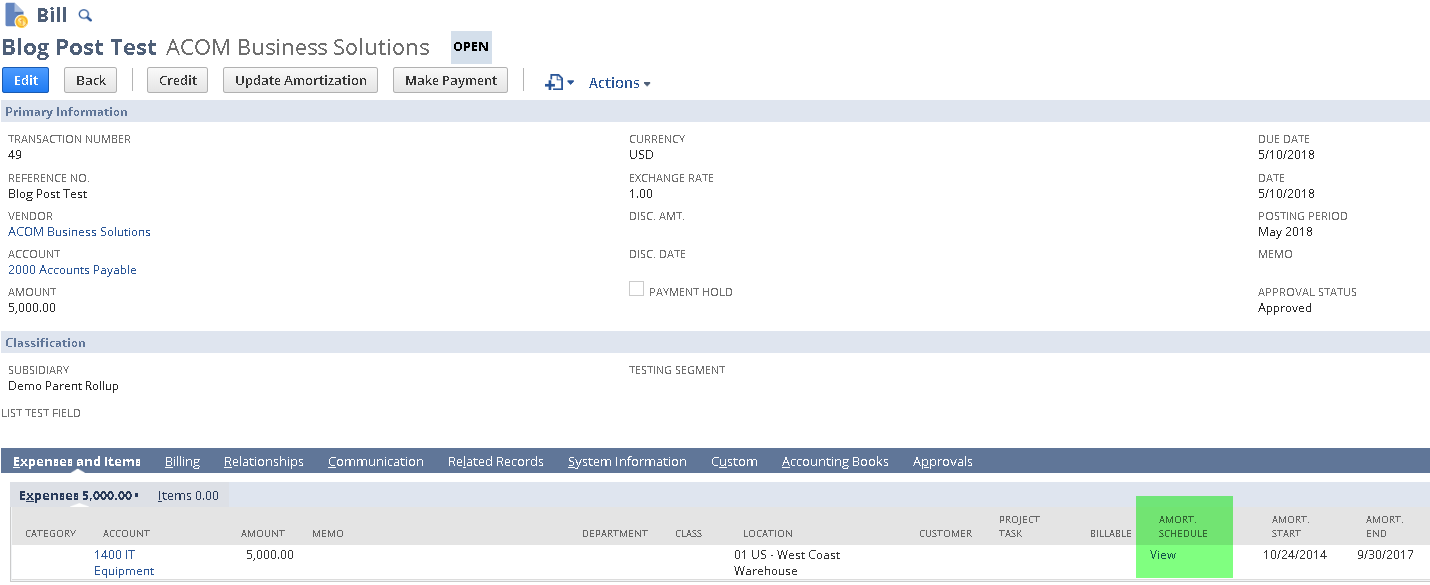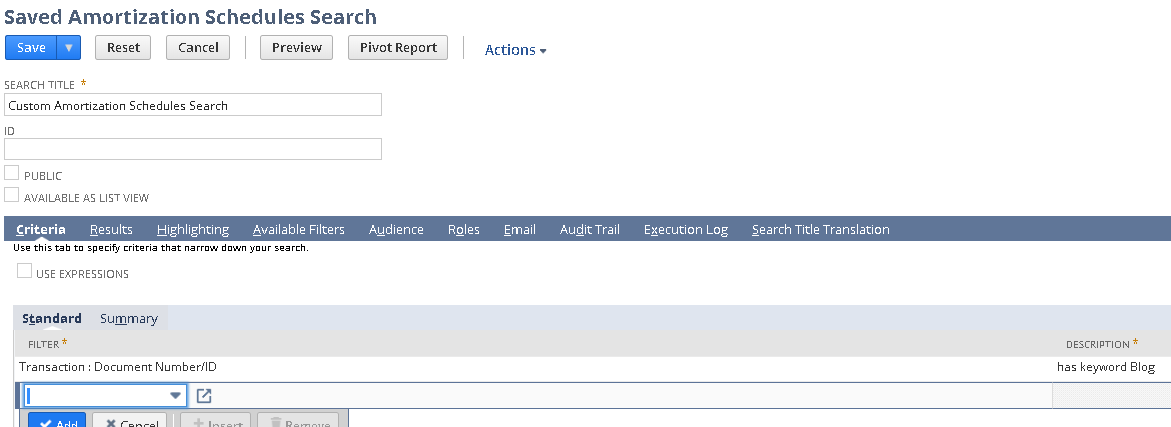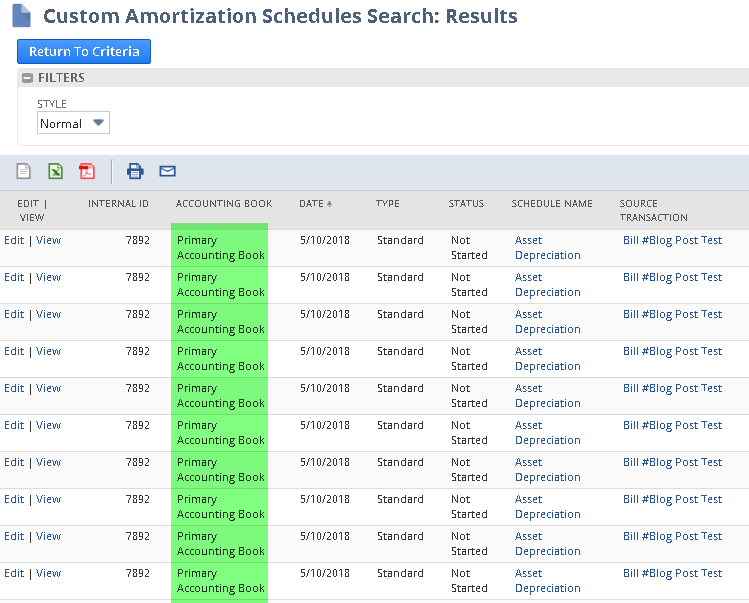For general information and tips on Multi-Book reporting and searching, see my previous post here.
As you may or may not know, Multi-Book Accounting (MB) is a fairly new feature in NetSuite at only a few years old. As such, there are still a few gaps here and there in reporting. One of them has to do with how Multi-Book shows (or doesn’t show) data related to Amortization Schedules and legacy Rev Rec Schedules (not ARM).
When looking at a transaction that’s generated an Amortization or Rev Rec Schedule, there’s unfortunately no indication that there has been a schedule generated in the secondary book(s).
In taking a look at an example transaction, it’s easy to see that an Amortization Schedule has been generated for the primary book, since there’s a “View” link available. However, there’s no indication on any of the other subtabs that secondary book Amortization Schedules exist, even though I know they do. The Update Amortization button (this will only be present in your environment if Multi-Book is set up a certain way) shows that the schedules should have been generated since a template has been assigned, but there’s no link to the schedules here either.


The first thought would be to go look at an Amortization Schedule Saved Search. It’s easy enough to put in a Source Transaction as a criterion, but as you can see, that too unfortunately shows only the primary book schedule due to the way Multi-Book field joins are set up. The Amortization Schedule search will show the other schedules, but only if you take off the Source Transaction criterion, which can leave you with a large number of lines to sort through.


The easiest way we’ve found to be able to look up these schedules is via a Multi-Book Transaction Saved Search.
You can add additional criteria, but the main one used should be that the Internal ID of the Amortization Schedule join is not empty. What this does is show us only lines that have an Amortization Schedule attached.

On the results tab, you can add whatever fields are relevant to you, but Document Number and Line ID should be added to the default fields of Accounting Book, Account and Amount. Including a clickable link is also a good practice to make navigation easier for yourself or other users.

Once you run the search, you can see that it will show the Amortization Schedules created for each book and you can click on the link to get to and examine the schedule as needed.

I’ve focused solely on Amortization Schedules for purposes of this post, but the same configuration above should work for reporting on Legacy Revenue Schedules. You’d just need to use the Rev Rec Schedule join rather than the Amortization Schedule one.
I’ve not figured out a way to link this search to the source transaction since Multi-Book Transaction searches are not available for use as a sublist, but feel free to comment below if you know a way.
For more information on this topic or others related to NetSuite, contact RSM at erp@rsmus.com or by phone at 855.437.7202.
By: Ryan Meyer

 RSMUS.com
RSMUS.com